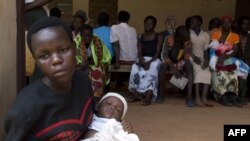- 1981 - First cases of unusual immune system failure identified among gay men, women and injecting drug users
- 1983 - Luc Montagnier isolates what is later known as HIV
- 1984 - Robert Gallo identifies HIV as the cause of AIDS
- 1985 - At least one case of HIV identified in every region of the world
- 1987 - AZT, the first therapy for AIDS, is approved in the United States
- 1988 - Women account for half of adults with HIV in sub-Saharan Africa
- 1990 - One million children have lost one or both parents to AIDS
- 1991 - The red ribbon becomes a symbol of AIDS awareness
- 1994 - First treatment to reduce mother-to-child HIV transmission is developed
- 1996 - Brazil becomes the first developing country to provide antiretroviral therapy through its health program
- 2000 - UNAIDS, WHO, pharmaceutical companies launch initiative to increase access to HIV treatment in developing countries
- 2003 - U.S. President George W. Bush announces the $15 billion President's Emergency Plan for AIDS Relief, PEPFAR
- 2005 - 1.3 million people in low and middle income countries are receiving antiretroviral therapy
- 2006 - Annual global spending on AIDS in low and middle income countries is $8.9 billion
- 2007 - Another major HIV vaccine trial is stopped after preliminary results show no benefit
- 2008 - PEPFAR reauthorized for $48 billion over five years
- 2009 - 5.2 million people in low and middle income countries have access to antiretroviral therapy
- 2010 - U.S., South Korea, China and Namibia lift travels bans on HIV-positive people.
- 2011 - Trial results showed early start to antiretroviral drugs greatly reduces the transmission of HIV among discordant couples
Source: UNAIDS, Avert




